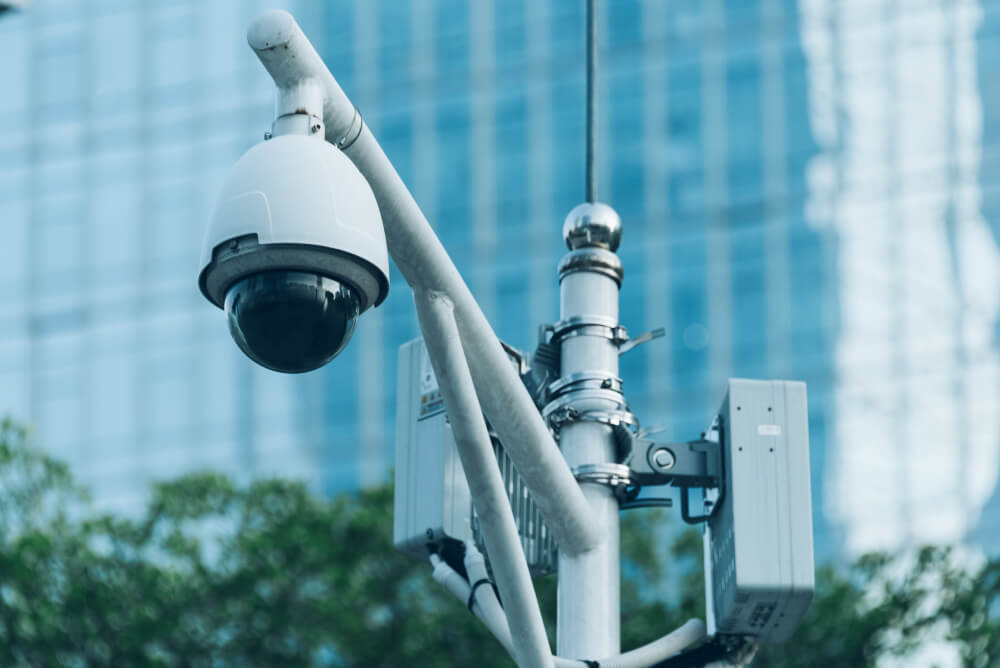When it comes to LiDAR systems, which are essential tools for detailed environmental mapping and autonomous technology. There’s a wide range of options available, each suited to different needs.
You might have heard about solid-state, mechanical, and hybrid LiDAR systems, but do you know how they actually differ in terms of how they scan and perform?
Solid-state LiDAR systems are like the reliable digital cameras of the LiDAR world, using purely electronic methods to steer their laser beams, which means fewer moving parts and often a more compact design. On the other hand, mechanical LiDAR systems use physically moving parts, like rotating mirrors, to achieve a wider scan area and superior detail. Hybrid systems? They’re the best of both worlds, combining elements of solid-state and mechanical technologies to optimize both the range and the resolution of the scans.
Let’s break it down in a way that’s easy to grasp.
What is LiDAR System?
LiDAR, which stands for Light Detection and Ranging, is a technology used to measure distances and map environments.
LiDAR systems are widely used in various fields, such as autonomous driving, where they help cars “see” the road and obstacles, in archaeology to map ancient ruins, and in forestry to measure trees and vegetation. The technology is valued for its accuracy and the detailed data it can produce, making it a crucial tool in many scientific and industrial applications.
Here are three types of LiDAR System,
Mechanical LiDAR Systems
These LiDAR systems use mirrors that rotate to bounce a laser beam around the environment, helping to measure distances from various angles. Some mechanical LiDARs have motors that move the entire device or its parts to direct the laser beams across a wide area.
Performance Characteristics:
- Mechanical LiDAR systems are quite precise and can measure long distances very accurately. They are trusted for their detailed measurements.
- These systems collect data quickly because the mirrors or motors move fast, allowing the device to scan large areas in less time.
Solid-State LiDAR Systems
Unlike mechanical LiDARs, solid-state systems don’t have parts that move, which makes them more robust and less prone to breaking down. These systems use advanced technology to direct laser beams or light flashes across the area, which helps in mapping spaces without physical movement.
Performance Characteristics:
- With no moving parts, solid-state LiDARs are very reliable and last a long time.
- These devices are smaller and easier to fit into different technologies, like cars and smartphones, making them versatile.
Hybrid LiDAR Systems
Hybrid LiDAR systems merge the best features of both mechanical and solid-state technologies, using both moving parts and stationary elements to optimize performance. These might include a combination of rotating components for detailed scans and phased arrays for rapid area coverage.
Performance Characteristics:
- Hybrid systems aim to offer a good mix of the high accuracy and range of mechanical systems with the durability and compact design of solid-state systems.
Scanning Mechanism Detailed Comparison
The scanning mechanism of a LiDAR system refers to how it moves its laser beams to scan the environment. Here is how the three LiDAR system differs in terms is scanning mechanism.
Solid-State LiDAR
Solid-state LiDAR systems use electronic methods, such as optical phased arrays, to direct laser beams across the environment. This technology steers beams of light by adjusting the wavefront phase with no moving mechanical parts, which significantly reduces the risk of mechanical failures and increases the system’s lifespan.
The compactness and robustness of solid-state systems make them highly suited for applications where reliability and durability are paramount, such as in consumer vehicles and mobile devices.
Mechanical LiDAR:
Mechanical LiDAR systems rely on physically moving parts, like rotating mirrors or entire assemblies, to scan their surroundings. This movement allows for a very wide and dynamic scanning range, capable of capturing vast areas quickly and with high detail.
The precision and extensive coverage offered by mechanical systems are ideal for applications requiring detailed topographic surveys, such as in civil engineering, forestry, and urban planning. However, the reliance on moving parts can lead to increased wear and tear, potentially lowering the system’s overall reliability over time.
Hybrid LiDAR:
Hybrid LiDAR systems blend the technologies of both solid-state and mechanical LiDARs. They might use a fixed laser that benefits from electronic steering for rapid coverage while incorporating mechanical elements to extend the laser’s range and improve resolution. This combination allows hybrid systems to offer a balanced performance, making them versatile for a variety of applications.
Hybrid LiDARs can adapt to the needs of different environments by leveraging the reliability of solid-state components and the detailed scanning capabilities of mechanical systems.
Which is Better?
Determining which type of LiDAR is better depends largely on the specific requirements of the application. Here are some considerations:
- Solid-state LiDAR is often better for applications where size, durability, and reliability are critical. It’s well-suited for consumer products and automotive applications where space is limited and long-term reliability is necessary.
- Mechanical LiDAR is typically better for applications requiring the highest level of detail and range. Its ability to capture intricate and extensive data makes it ideal for scientific research and complex surveying tasks.
- Hybrid LiDAR offers a good compromise between the two, providing better reliability than purely mechanical systems while still maintaining a high level of detail and range. This makes it suitable for emerging technologies and applications that require both detailed data and robust performance.
Performance Characteristics of LiDAR Systems
The performance of a LiDAR system can be measured mainly on the following characteristics:
- Range
- Accuracy
- Resolution
- Speed of Data Acquisition
Range
It refers to the maximum distance a LiDAR system can effectively measure and detect objects. Let’s compare the three LiDAR systems.
Solid-State LiDAR
Solid-state LiDAR systems typically have a shorter range, a limitation influenced by the static nature of their beam steering technologies. While these systems excel in terms of reliability and compactness, their electronic beam steering does not yet match the distance capabilities of mechanical systems.
However, they are constantly improving and are suitable for applications where long range is not the primary requirement, such as obstacle detection in vehicles or object recognition in robotics.
Mechanical LiDAR
Mechanical LiDAR systems provide the longest range due to their ability to physically move their laser emitters or mirrors, projecting beams over great distances and across expansive areas. This capability makes mechanical LiDAR the preferred choice for applications requiring extensive area coverage and depth analysis, such as geographic mapping, large-scale surveying, and meteorology.
Hybrid LiDAR
Hybrid LiDAR systems offer a range that sits between solid-state and mechanical systems. By integrating both technologies, they can provide more extensive coverage than solid-state alone while retaining more compactness than purely mechanical systems.
Hybrid systems are well-suited for applications that benefit from both moderate range and detailed data acquisition, such as automated industrial processes and advanced navigation systems.
Range Comparison
For applications requiring the utmost in range and area coverage, Mechanical LiDAR stands out as the better choice. However, for those needing a balanced solution that offers reasonable range with greater reliability and less bulk, Hybrid LiDAR systems may be the ideal compromise.
Accuracy
With accuracy, it indicates how close the LiDAR’s measurements are to the actual distances or dimensions of objects.
Solid-State LiDAR
Solid-state LiDAR systems are generally very accurate within their operational limits, offering precision that is sufficient for a wide range of applications. They excel in environments where rapid response and object detection are crucial, such as in automotive safety systems and mobile robotics.
While they might not capture the minutest details like mechanical systems, their accuracy is typically adequate for most commercial and industrial applications.
Mechanical LiDAR
Mechanical LiDAR systems are the gold standard for accuracy, capable of detecting incredibly fine details over longer distances. Their mechanical scanning mechanisms allow for precise control over the laser beams, resulting in highly detailed data.
This makes them ideal for high-precision applications like scientific research, where exact measurements are critical.
Hybrid LiDAR
Hybrid LiDAR systems achieve high levels of accuracy by combining the fine detail capabilities of mechanical systems with the stability and speed of solid-state systems.
This makes them particularly useful in applications that demand both detailed scanning and robust operation, such as in certain types of autonomous vehicles and complex surveillance systems.
Accuracy Comparison
If the highest degree of accuracy and detail is required, Mechanical LiDAR is the preferable option. For applications where a balance of accuracy and operational robustness is necessary, Hybrid LiDAR offers a valuable blend of both worlds.
Resolution
Resolution describes the smallest level of detail that the LiDAR can discern within the scanned environment.
Solid-State LiDAR
Solid-state LiDAR systems provide a decent level of detail in the images they produce, which is enough for many uses like helping cars see the road or monitoring areas for safety. They don’t have the highest resolution because of some limitations in their technology, but they work quickly and reliably.
Mechanical LiDAR
Mechanical LiDAR systems can capture very detailed and precise images because they use moving parts to scan thoroughly over an area. This makes them excellent for jobs where every little detail matters, such as mapping out landscapes or examining historical sites.
Hybrid LiDAR
Hybrid LiDAR combines the quick operation of solid-state systems with the detailed scanning of mechanical systems. This means they can capture pretty detailed images and do it relatively quickly, making them versatile for a variety of tasks, like planning city developments or guiding autonomous vehicles.
Resolution Summary
If you need very detailed images, go with Mechanical LiDAR. If you need good detail but faster operation, Hybrid LiDAR is a good middle ground.
Speed of Data Acquisition
Measures how quickly the LiDAR system can collect data and complete scans of an area. Lets see the comparison.
Solid-State LiDAR
Because solid-state LiDAR doesn’t have moving parts, it can scan areas very quickly. This speed is great for applications that require real-time data, like self-driving cars that need to make instant decisions based on their surroundings.
Mechanical LiDAR
Mechanical LiDAR is a bit slower because it has to move parts around to get a full scan. This isn’t ideal for very fast-paced situations but is okay for projects where a bit of extra time won’t hurt, like in detailed geographical surveys.
Hybrid LiDAR
Hybrid LiDAR systems use a mix of fast electronic controls and some mechanical movements, giving them a good balance of speed and detail. This setup works well in situations where you need quick but comprehensive scans, such as navigating through busy urban areas.
Speed of Data Acquisition Summary
For the quickest scanning, choose Solid-State LiDAR. For a balance between speed and detailed scanning, Hybrid LiDAR is effective.
Verdict
Deciding between solid-state, mechanical, and hybrid LiDAR systems really depends on your specific needs and applications.
If you need a compact, durable system with fewer maintenance concerns, a solid-state LiDAR might be the way to go, ideal for integration into consumer products where space and reliability are key.
For tasks requiring the highest level of detail and a broader scanning capability, a mechanical LiDAR provides unparalleled accuracy and depth, perfect for high-precision mapping and scientific research.
If your requirements are somewhere in the middle, needing both detail and reliability, the hybrid LiDAR offers a versatile solution by blending the best features of both solid-state and mechanical systems. Each type brings its own advantages to the table, allowing you to choose based on the balance of performance, cost, and application suitability.






